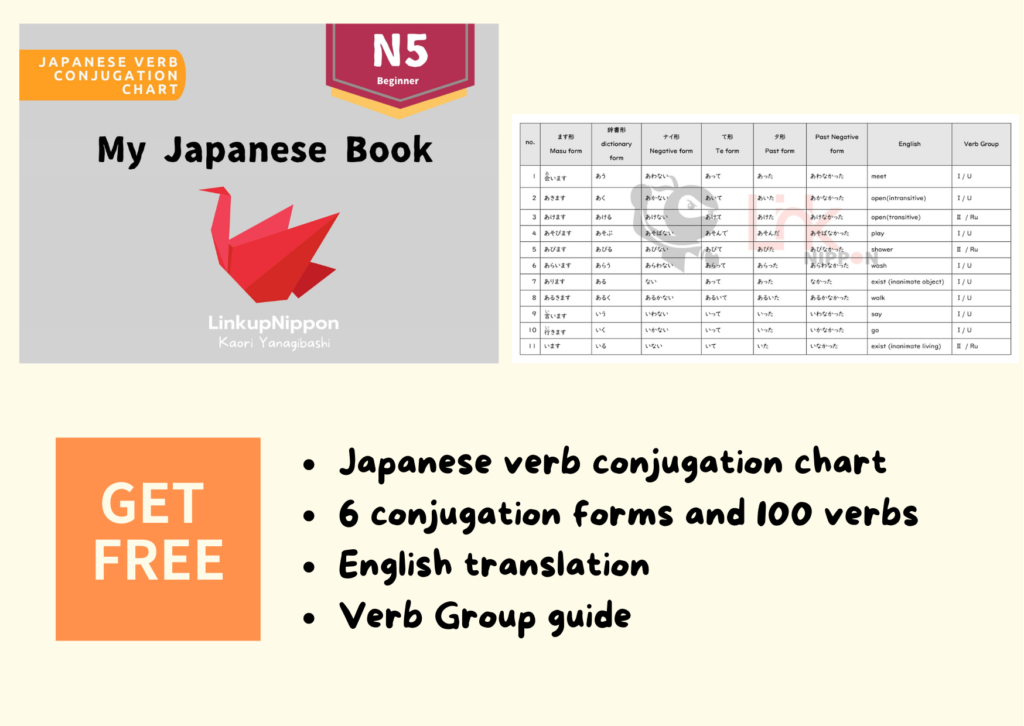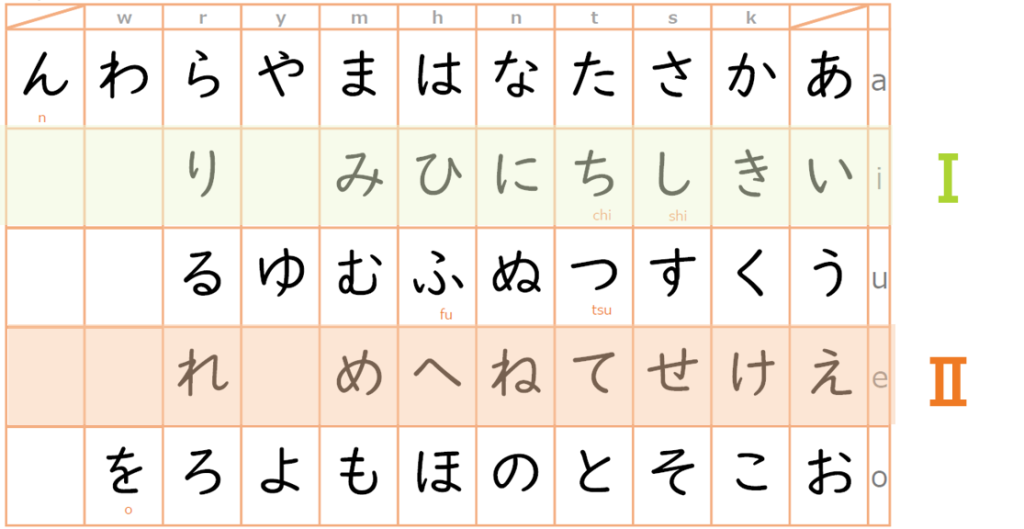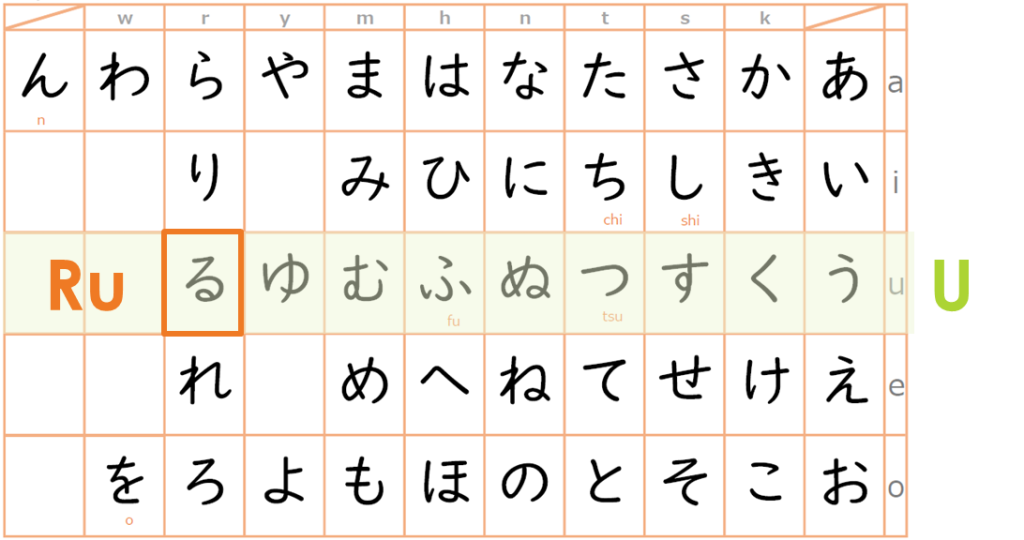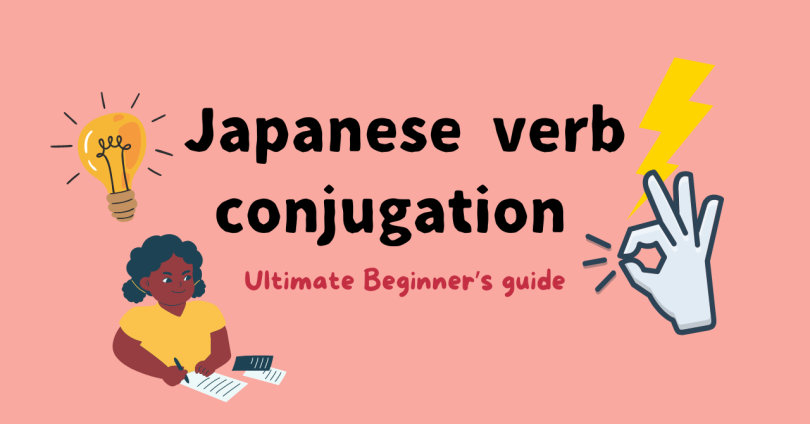In Japanese, as in other languages, verb conjugation exists. But you need not fear. It has a kind of regularity and you will be able to understand it logically. If you can use Japanese verb conjugation freely, you will be able to communicate much more widely and smoothly.
However, some students may be confused by the way different Japanese textbooks and teachers explain conjugations. In this section, we will follow those information and explain Japanese conjugation in a way that is easy to understand for students studying with any textbook.
Table of contents
Preparation for Japanese verb conjugation
What you need to master before studying conjugation is the hiragana chart. It is not only about writing or reading Hiragana. It is to get that table sound and order completely in your head. This table is very logical, so it is the base of the utilization.
Practice Methods
Using the flashcards, the hiragana are shown randomly. For example, if you see “し[shi]”, you can answer “さしすせそ[sa shi su se so]”, and see “ご [go]”, you will answer “がぎぐげご[ga gi gu ge go]”. Practice until you can answer without thinking about which sound is in which line and column. The Anki app is recommended for this. And here you can also play simple quiz with using word wall to check.
How many Japanese verb conjugations are there?
This question is often asked by students. It’s good to know the big picture. First of all, there are five conjugations that you will learn at the beginner level (JLPT N5). Then, in the elementary and intermediate level(JLPT N4), you will study 7 conjugated forms. These are the base conjugated forms of the Japanese language. In Japanese, tense, modality, or expression is added based on this conjugation.
And then, keigo (honorific paraphrase), a characteristic of the Japanese language, is also added.
| Beginner’s level (N5) | Pre-Intermediate level (N4) |
| マス形 (Masu form)▶ | 可能(Potential)▶ |
| テ形 (Te form)▶ | 条件形(Conditional form)▶ |
| 辞書形 (Dictionary form)▶ | 意向形 (Volitional form)▶ |
| ナイ形(Negative form)▶ | 受身 (Passive)▶ |
| タ形 (Ta form)▶ | 尊敬 (Respect)▶ |
| 使役 (Causative)▶ | |
| 使役受身(Causative Passive)▶ |
Do you want Japanese conjugation chart?

600 Basic Japanese Verbs: The Essential Reference Guide:
Which verb conjugation should I start first?
The order of conjugation that you learn depends on your teacher and Japanese textbooks. There are two main orders in which conjugations begin. They are the dictionary form or the masu form.
Masu form vs Dictionary form Politeness : Masu form >Dictionary form) Using dictionary : Dictionary form) Native speaker's step : Dictionary form → Masu form
So,the reason for learning from the masu form is that it allows you to speak politely. There are several speech styles in Japanese, and in order not to be rude to someone you meet for the first time, you need to speak using masu form. Conversely, the dictionary form is a speech style used among friends and family, so it would be impolite to speak to a person you have just met.
What is your goal for Japanese?
Now, think about your Japanese learning goal and environment. If you live in Japan and have many opportunities to talk with people you don’t know, then study from the masu form. If you are a student, for example, and want to speak frankly with your classmates or understand anime, you may study from the dictionary form.In any case, we will need both in the near future.

First step for Japanese verb conjugation : Group sort
The first step is to divide the verbs into three groups. Different textbooks call the groups by different names. Even though they are called differently, the content is the same.
- Ⅰ / U-verbs / Godan ・・・よみます(よむ),あいます(あう)
- Ⅱ / Ru-verbs / Ichidan・・・たべます(たべる),ねます(ねる)
- Ⅲ / Irregular verbs / Irregular verbs・・・きます(する),きます(くる)
– Reference textbook
- Ⅰ・Ⅱ・Ⅲ ・・・ みんなの日本語, できる日本語
- Ru・U・Irregular・・・ Genki
- Godan・Ichidan ・・・Native Japanese speaker’s grammar book
Sort by ます形 (masu form)
First, let’s sort based on masu form, use Groups I, II, and III.
- します・きます → Group Ⅲ
- If the vowel sound before ます is “e”, then Group Ⅱ.
- If the vowel sound before ます is “i”, then mainly Group Ⅰ.An exception exists in Group II.

Group Ⅰ
あいます (ai | masu) / のみます (nomi | masu) / かきます (kaki | masu)
Group Ⅱ
たべます(tabe | masu) / ねます(ne | masu)
みます(mi | masu)* / おきます(oki | masu)* / います (i | masu)*
Group Ⅲ
します / きます
Sort by 辞書形: Dictionary form
Next, when sorting based on dictionary form, use U-verbs,Ru-verbs, and Irregular verbs.
- します・きます → Irregular verbs
- If the last sound is non-“る(ru)”, then U verbs.
- Example. のむ (nomu) → U verbs
- If the vowel before “る(ru)” is “a,u,o”, then U verbs.
- Example. つくる (tsuku | ru) → U verbs
- If the vowel before “る(ru)” is “i,e”,then mainly Ru verbs. An exception exists in U verbs.
- Example. たべる (tabe| ru) → Ru verbs
- Example. ねる (ne | ru ) → Ru verbs
- Example. かえる (kae| ru) → U verbs *

U verbs
あう (au) / のむ (nomu) / かく (kaku)
つくる(tsukuru) / のぼる(noboru)
かえる(kaeru)* / きる(kiru)*
Ru verbs
たべる(taberu) / ねる(neru) / みる(miru) / おきる(okiru) / いる(iru)
Irregular verbs
する / くる
How to make each verb conjugation forms?
Finally, I will now explain how to make each of these different forms of utilization. Please click on the appropriate form for each and enrich it with a separate article.
Also, if you want all the conjugation tables with basic verbs, please download them here.
| Beginner’s level (N5) | Pre-Intermediate level (N4) |
| マス形 (Masu form)▶ | 可能(Potential)▶ |
| テ形 (Te form)▶ | 条件形(Conditional form)▶ |
| 辞書形 (Dictionary form)▶ | 意向形 (Volitional form)▶ |
| ナイ形(Negative form)▶ | 受身 (Passive)▶ |
| タ形 (Ta form)▶ | 尊敬 (Respect)▶ |
| 使役 (Causative)▶ | |
| 使役受身(Causative Passive)▶ |
If you want an online place to practice, check out our online community. Let’s practice together!








